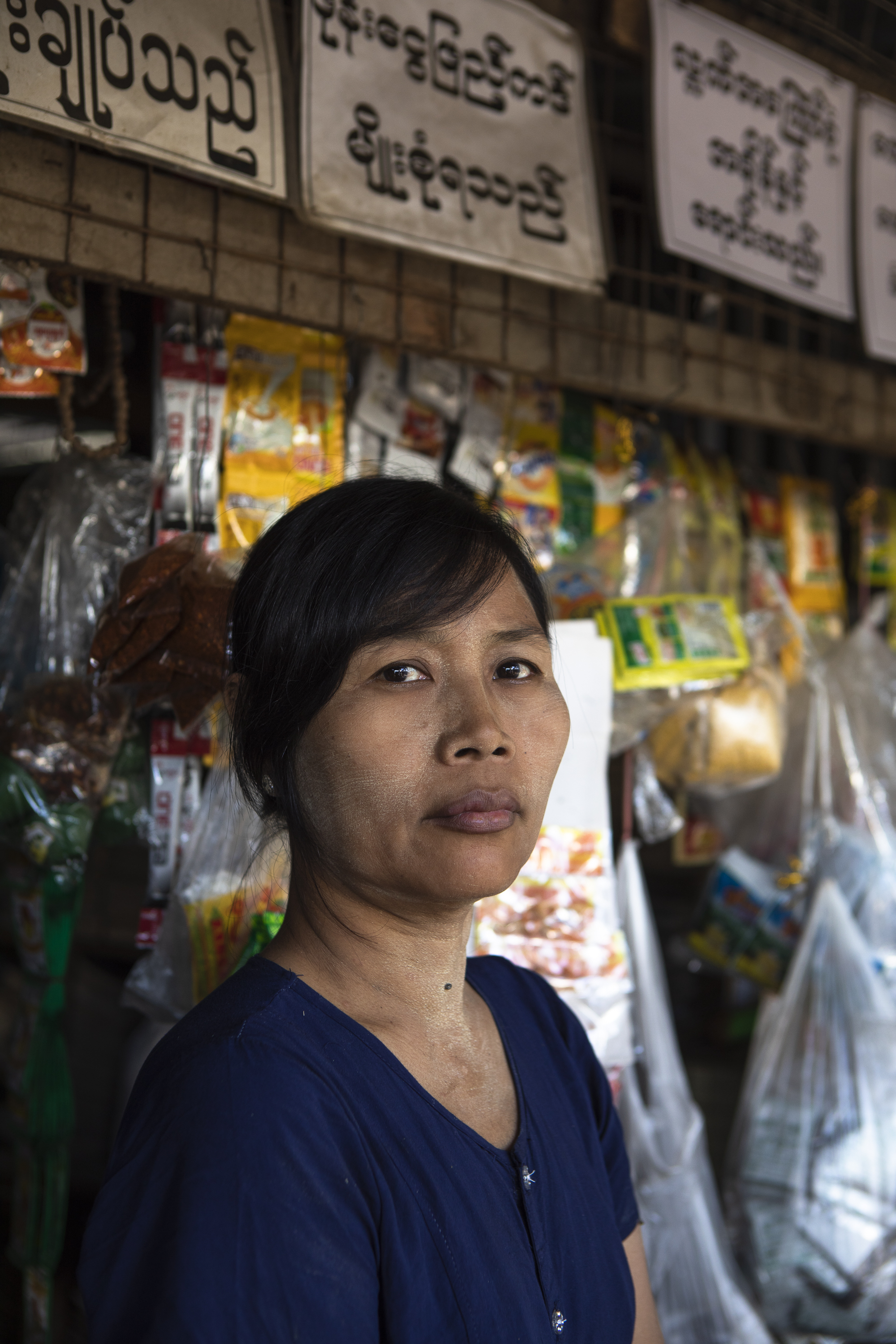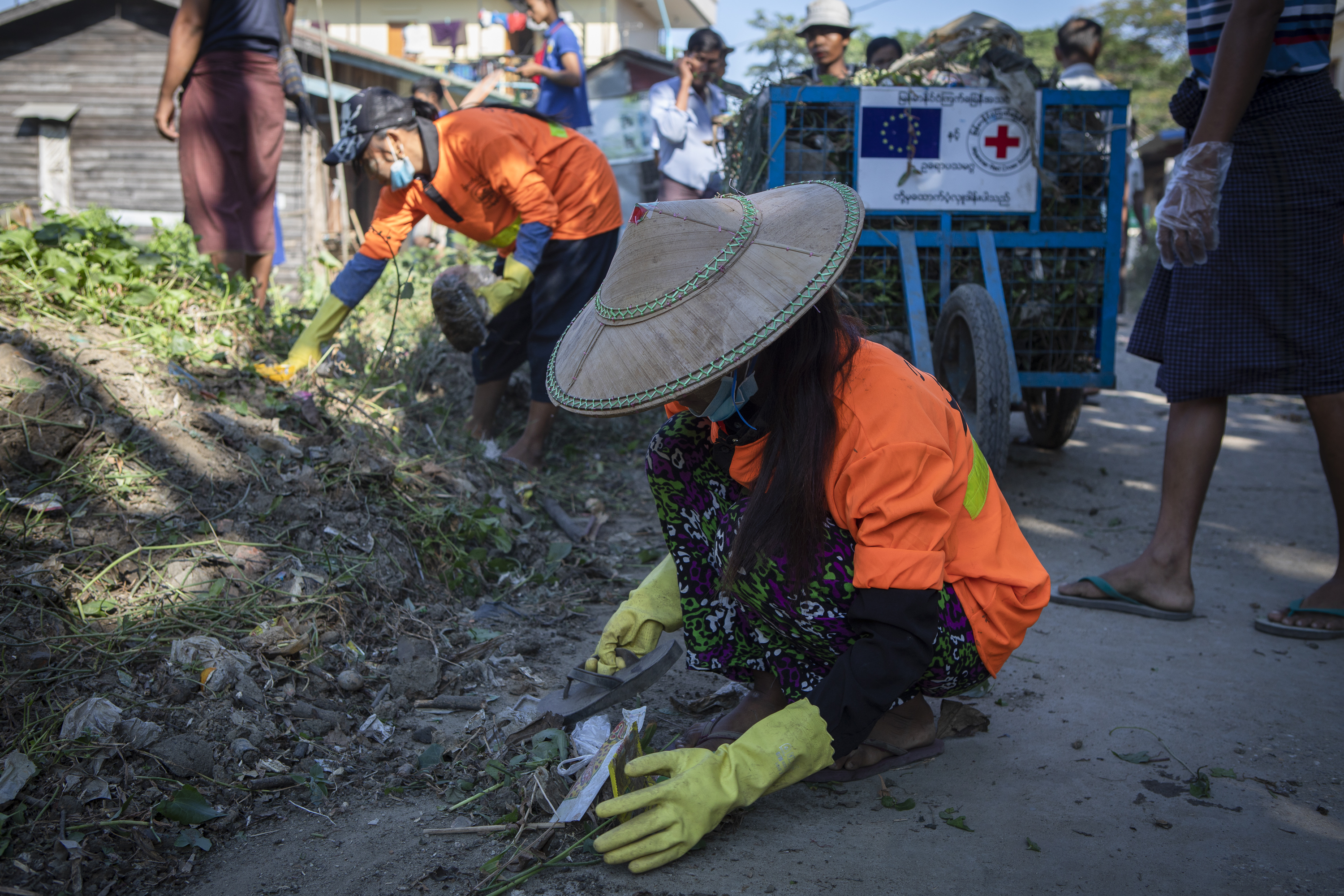Waste management in Myanmar
The industrial Township of Hlaing Thar Yar on the outskirts of Yangon is the most densely populated area in Myanmar, with an estimated 700,00 residents. When cyclone Nargis ravaged the region a decade ago, tens of thousands of people sought refuge in the township, where they have stayed ever since. People also continue to move to Hlaing Thar Yar from the surrounding countryside in search of opportunities. With limited basic infrastructure and at just 5 metres above sea level, the township is particularly prone to flooding, fires, and the spread of disease.

the latest flooding she and her husband
faced, Myanmar, December 2018
© Maria Santto / Finnish Red Cross
During a recent flood, shop keeper Daw San San Win and her husband almost lost the sock of their roadside kiosk – their lifeline. “At the beginning of the flood, we were not prepared, and all our belongings got wet” she recounts. “A big mass of water rose up from the tunnel. When I saw it, I packed up the books, cooking oil, tanks, rice containers and other things that would have gone bad if they had gotten wet. It was chaotic and some things fell in the water while we were moving”, she adds.
In partnership with the Myanmar Red Cross, the Danish Red Cross and the Finnish Red Cross have been working to reduce the risks faced by the families in the township. Funded by the European Commission Humanitarian Aid and Civil Protection (ECHO), the project aims to strengthen the resilience of urban communities and institutions through awareness raising, preparedness measures and advocacy.
"When the flood hit during the rainy season, we gathered sandbags and protected the overflow of flood water to the area in case the embankment breaks", shares Red Cross volunteer, Daw Khin Khin Lwin. "We helped to control the flood by digging tunnels".
In addition to assisting the most vulnerable people in the community during floods and other disasters, Myanmar Red Cross and its volunteers have been working to improve the overall situation and raise awareness year-round. Teams are dispatched weekly to clean drainage systems blocked by litter and overgrown fauna so that water can flow freely. Volunteers also help to dig new canals and clear rubbish from the roadsides.

In addition to assisting the most vulnerable people in the community during floods and other disasters, Myanmar Red Cross and its volunteers have been working to improve the overall situation and raise awareness year-round. Teams are dispatched weekly to clean drainage systems blocked by litter and overgrown fauna so that water can flow freely. Volunteers also help to dig new canals and clear rubbish from the roadsides.
Project partners have also been carrying out training in approximately 20 schools; providing equipment and helping them to develop safe plans – including by constructing safety zones, which are also being built in hospitals. This has been complemented by institutional awareness and preparedness, policy advocacy and township planning initiatives, as well as spreading the lessons learned within the wider national Disaster Risk Reduction community. Over 23,000 people are expected to be directly reached by this project, but the township-wide Early Warning System and the secure evacuation routes created will benefit far more residents.
Basic information
Activity name
Country
Myanmar
Duration
2017-2019
Partners
Myanmar Red Cross, Danish Red Cross, Finnish Red Cross

